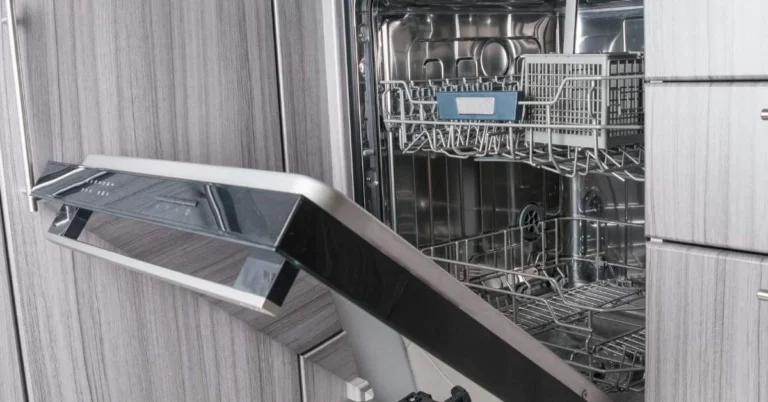When your dishwasher isn’t cleaning dishes, every cycle feels like wasted time, wasted water, and mounting frustration.”
A dishwasher that fails to clean dishes properly transforms a time-saving appliance into a source of frustration. You expect spotless plates and sparkling glassware, but instead, you find food residue, greasy streaks, or cloudy films. Dishwashers are essential for streamlining kitchen tasks, making their cleaning efficiency critical for daily convenience. Poor performance often stems from mechanical failures, improper usage, or neglected maintenance.
This comprehensive guide examines the primary reasons behind inadequate dishwasher cleaning and provides actionable solutions to restore optimal performance. From addressing clogged filters to resolving water heater issues, you’ll find step-by-step instructions to troubleshoot and maintain your appliance. By the end, you’ll understand how to:
- Identify the root causes of poor dishwasher performance
- Implement effective DIY repairs for each issue
- Adopt maintenance practices for consistent, high-quality results to ensure your dishwasher is not cleaning effectively.
- Determine when professional repair services are necessary
Common Reasons Your Dishwasher Isn’t Cleaning Properly

Several factors contribute to a dishwasher’s inability to clean dishes effectively. These range from user errors, such as overloading, to mechanical issues, like component clogs or malfunctions. The most common problems include blocked spray arms, dirty filters, incorrect detergent use, or insufficient water temperature. Below, we outline seven prevalent causes, their symptoms, and detailed solutions to help you restore your dishwasher’s cleaning capabilities.
1. Clogged or Dirty Spray Arms
Problem: Spray arms distribute water jets to clean dishes. When clogged with food particles, grease, or mineral deposits from hard water, they fail to spray water evenly, reducing cleaning effectiveness. This often affects the top rack, where water distribution is critical.
Signs: Dishes, especially on the upper rack, remain dirty or retain food residue after a full cycle, indicating blocked spray arms.
Solution:
- Disconnect the dishwasher from its power source for safety.
- Locate the spray arms, typically at the bottom or middle, and detach them as outlined in user manuals for brands like Bosch, Whirlpool, GE, or Samsung.
- Inspect the small holes along the spray arms for blockages, such as food scraps or calcium buildup.
- Rinse the arms under warm water to remove debris.
- Use a small brush, like an old toothbrush, to clear stubborn particles from the holes.
- Soak the arms in a solution of equal parts water and white vinegar for 15 minutes to dissolve mineral deposits.
- Reattach the arms securely and verify they spin freely.
If the top rack isn’t cleaning properly, focus on the upper spray arm, as it may be clogged or misaligned, preventing water from reaching dishes effectively.
Additional details may provide insights into dishwasher problems and maintenance.:
- Clogs often form in areas with hard water, where mineral deposits accumulate over time.
- Different models have unique spray arm configurations; Bosch dishwashers often feature multiple arms, including a dedicated upper arm, while GE models may have a single, robust arm.
- Clean spray arms every one to two months to prevent buildup.
- If the top rack consistently comes out dirty, check for obstructions, like tall items on the lower rack blocking water flow.
- Some models include a diagnostic mode to test spray arm function; consult your manual for specifics.
In areas with hard water, like parts of Florida, clogged spray arms are a common issue. If regular cleaning doesn’t restore performance, professional help may be needed. For reliable local solutions, homeowners can schedule Expert Dishwasher Repair Service In Niceville to ensure spray arms and water flow are restored properly.
2. Faulty Water Heater or Low Water Temperature
Problem: Hot water is essential for dissolving grease and removing food particles. If the water temperature is too low due to a malfunctioning water heater or incorrect settings, cleaning performance suffers, leaving dishes greasy or with residue.
Signs:
- Dishes, particularly greasy items like pans or glassware, emerge with food particles.
- A sticky film remains on dishes after a cycle.
Solution:
- Place a thermometer in a glass on the top rack during a wash cycle to confirm the water reaches 120–140°F, the optimal range for effective cleaning.
- Adjust your home’s water heater to a minimum of 120°F to supply sufficiently hot water.
- For energy-efficient dishwashers, select a cycle with a built-in heating option to boost water temperature.
- If the dishwasher’s internal heating element is faulty, arrange for its replacement by a technician, as this involves electrical components.
This is especially relevant in regions like Florida, where high humidity can accelerate wear on electrical parts.
Additional Details:
- Low water temperature may result from a failing heating element or thermostat, common in older models.
- Test the temperature across multiple cycles to confirm consistency.
- Some dishwashers, like those from Whirlpool, allow temperature adjustments via the control panel; refer to your manual for instructions.
- In Florida homes, humidity can corrode electrical components, requiring regular inspections.
- Proper water temperature ensures detergent activation and effective grease removal.
This issue is particularly common in regions like Florida, where high humidity can accelerate wear on electrical parts.If you’re in Destin, and your dishwasher isn’t heating water properly, Destin Dishwasher Repair Services can help restore optimal performance by addressing issues like malfunctioning heating elements or thermostat failures.
3. Improper Loading
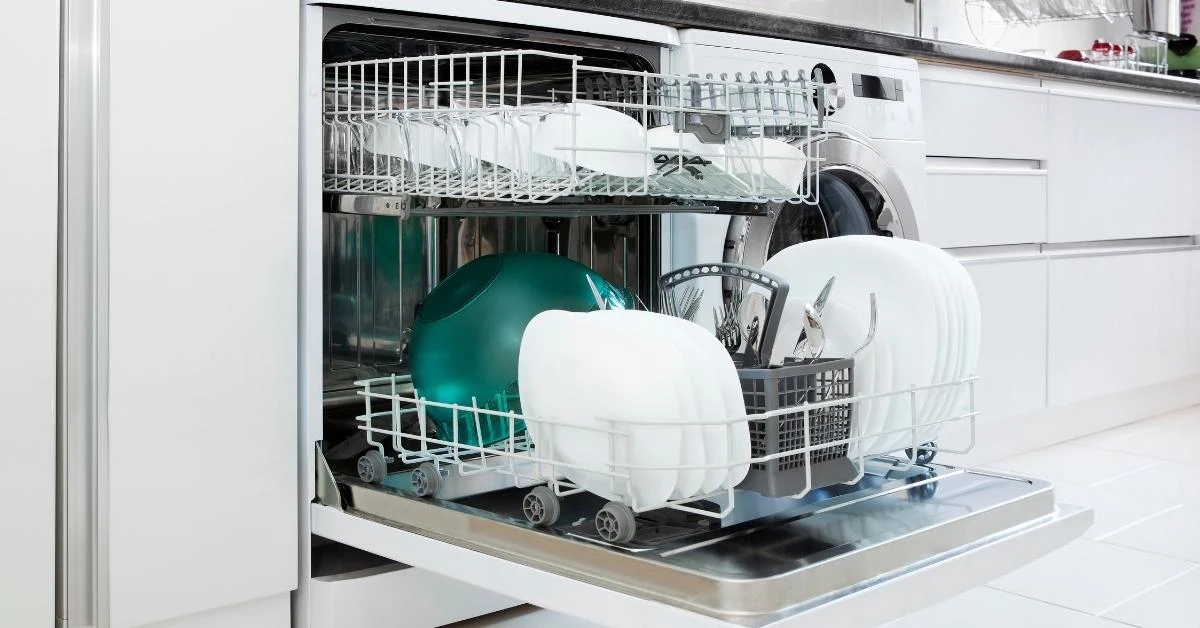
Problem: Incorrectly loaded dishes can obstruct water flow from the spray arms, reducing cleaning efficiency. Overloading or poor arrangement prevents water and detergent from reaching all surfaces.
Signs:
- Dishes in corners or on the top rack remain dirty.
- Hard-to-reach areas show food residue or grease.
Solution:
- Load your dishwasher according to the manufacturer’s guidelines, detailed in the user manual.
- Place plates on the bottom rack, facing inward to maximize water exposure.
- Position cups or bowls on the top rack, ensuring water can reach all surfaces.
- Space items to allow water and detergent to circulate freely.
- Manually spin the spray arms after loading to ensure no items obstruct their rotation.
If the top rack isn’t cleaning properly, verify that large items, like baking sheets on the lower rack, aren’t blocking water flow to the upper rack.
Additional Details:
- Dishwasher rack designs vary; Samsung models often feature adjustable tines for larger items, while Bosch dishwashers may include a third rack for cutlery.
- Review your manual to optimize loading for your specific model.
- Avoid placing tall pans or cutting boards in positions that shield other dishes from water jets.
- Proper loading ensures all dishes receive adequate water pressure and detergent coverage.
4. Clogged or Dirty Filters
Problem: The dishwasher filter, typically located at the bottom under the lower spray arm, traps food particles to protect the drain pump. A clogged or dirty filter restricts water flow, leading to poor cleaning performance and cloudy films on glassware due to redeposited debris.
Signs:
- Dishes retain food debris or appear cloudy after a cycle.
- A foul odor may indicate trapped debris.
Solution:
- Locate the filter at the base of the dishwasher, often a cylindrical or flat component, and remove it as instructed in the manual.
- Rinse the filter under warm water to clear food particles and grease.
- Use a soft brush to dislodge stubborn debris.
- If the filter is cracked or worn, replace it to maintain performance.
- Clean the filter every one to two months, or more frequently with heavy use.
This practice reduces cloudy films on glassware and ensures proper water circulation.
Additional Details:
- Filter designs differ; Bosch models often have multi-part filters, while GE models may feature simpler, single-piece designs.
- Check your manual for the exact location and removal process.
- In areas with hard water, filters may clog faster due to mineral deposits, contributing to cloudy glassware.
- Regular cleaning prevents odors and maintains cleaning efficiency.
This practice reduces cloudy films on glassware and ensures proper water circulation. If cleaning the filter doesn’t resolve issues with cleaning performance, it may be time to call for Fort Walton Beach Dishwasher Repair Services to check for more complex issues such as a malfunctioning drain pump or motor.
5. Broken or Worn-out Detergent Dispenser
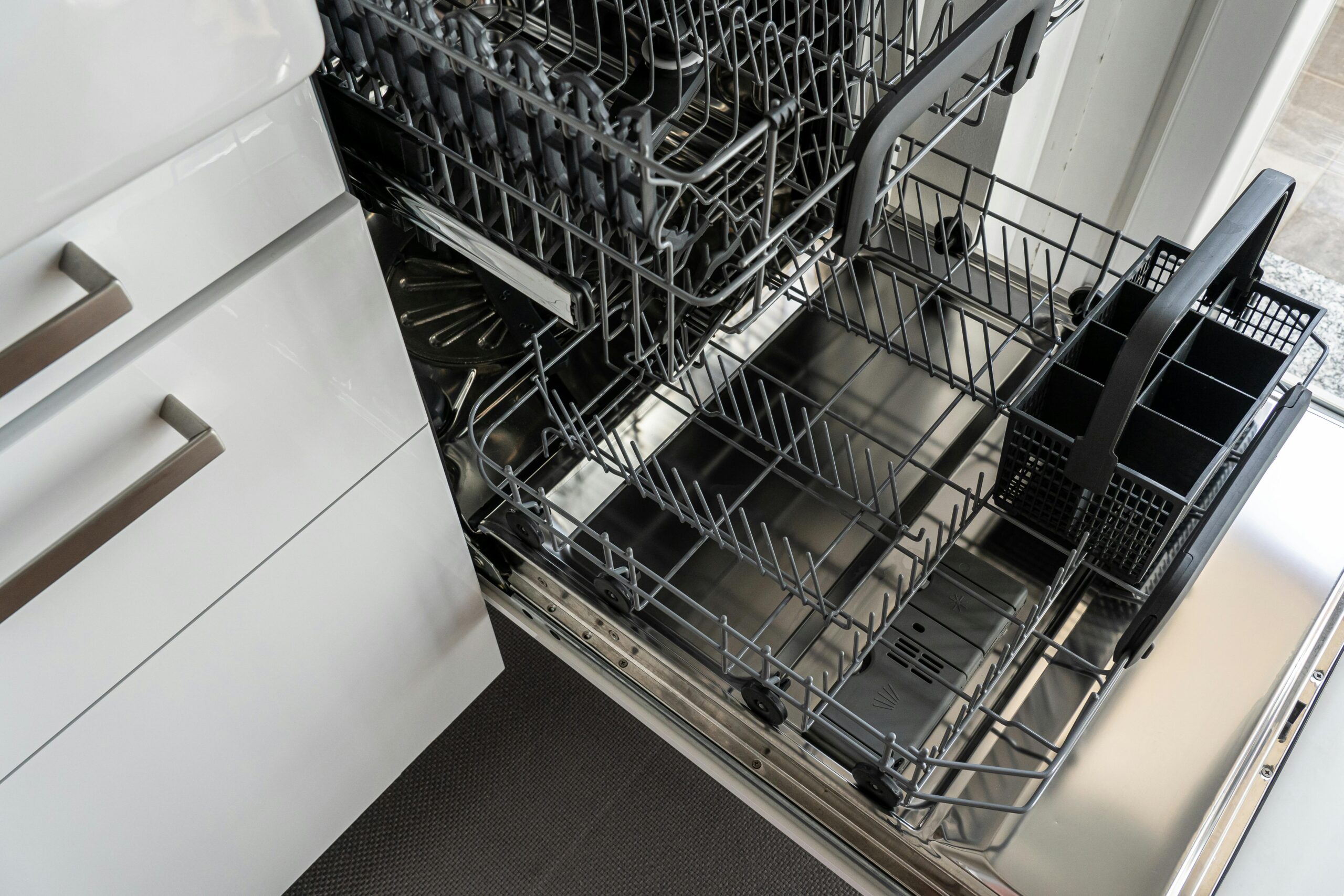
Problem: A malfunctioning detergent dispenser may fail to release detergent at the correct time, resulting in inadequate cleaning or residue buildup on dishes.
Signs:
- Dishes retain detergent residue or remain dirty.
- Cloudy films appear on glassware due to incomplete detergent release.
Solution:
- Inspect the dispenser door for cracks, sticking, or buildup.
- Clean the bottom of the dishwasher with a damp cloth to remove residue, ensuring it opens fully during the cycle.
- Test the dispenser by running a cycle with a small amount of detergent to confirm proper release.
- If the dispenser fails to open, arrange for repair or replacement.
Using rinse aid, while not always necessary, can reduce spotting and improve drying, particularly in hard water regions.
Additional Details:
- Dispenser issues often arise from using incorrect detergent or overloading the compartment.
- Some models, like Samsung, have advanced dispensers that release detergent and rinse aid at specific cycle stages.
- In hard water areas, rinse aid is effective for preventing cloudy films on glassware.
- If cleaning doesn’t resolve the issue, the dispenser’s spring or latch may require technical repair.
6. Low Water Pressure
Problem: Insufficient water pressure, often caused by obstructions in the water supply hose or a faulty inlet valve, reduces the force of water jets, impairing cleaning performance across all racks.
Signs:
- Dishes remain dirty after a full cycle.
- The top rack shows weak cleaning due to reduced water flow.
Solution:
- Turn off the water supply and inspect the water supply hose for kinks, bends, or blockages.
- Straighten or replace the hose as needed.
- Confirm the inlet valve opens fully during filling; a humming noise or low water levels may indicate a malfunction.
- Remove and rinse the inlet filter to ensure proper water flow for cleaning well.
If the top rack isn’t cleaning properly, low pressure may prevent water from reaching the upper spray arm.
Additional Details:
- Low water pressure can result from household plumbing issues, common in older homes.
- Test water pressure at the kitchen faucet to rule out broader problems.
- Some dishwashers, like GE models, include diagnostic codes for inlet valve issues; check your manual.
- Persistent low pressure may indicate a faulty impeller or inlet valve, requiring professional diagnosis.
- In Florida homes, humidity can strain plumbing systems, necessitating regular checks.
In Freeport, expert dishwasher repair services in freeport can quickly diagnose and fix issues such as faulty inlet valves or low water pressure, restoring your dishwasher’s cleaning power.
7. Using the Wrong Detergent or Too Much Detergent
Problem: Using non-dishwasher detergent or incorrect amounts leads to poor cleaning results or residue buildup, causing cloudy films on glassware or insufficient cleaning power.
Signs:
- Dishes have a cloudy film or soap residue.
- Cleaning performance is inconsistent across cycles.
Solution:
- Select a detergent formulated for dishwashers, avoiding hand-washing soap.
- Choose powder or pod detergents for Bosch or Whirlpool models, especially in hard water areas.
- Follow the manufacturer’s recommended detergent amounts, typically one tablespoon for standard loads.
- Use rinse aid and dishwasher detergent to minimize spotting and cloudy films on your dishes.
Overusing detergent can leave residue, while underusing reduces cleaning effectiveness.
Additional Details:
- Detergent performance varies by type (gel, powder, pods) and water conditions.
- In regions with hard water, select a detergent designed to combat mineral deposits.
- Store detergent in a dry place to prevent clumping.
- Brands like Bosch or GE typically have fewer reported issues due to reliable detergent delivery systems, unlike budget models prone to pump or valve failures.
- To prevent cloudy glassware, reduce detergent slightly if residue persists and ensure the dispenser functions properly.
If cleaning components or adjusting detergent doesn’t resolve your dishwasher issues, professional assistance may be necessary. Beach2Bay Appliances in Florida, provides expert repair services for residents in Niceville, Destin, Fort Walton Beach, and Freeport.
Additional Tips to Improve Cleaning Performance
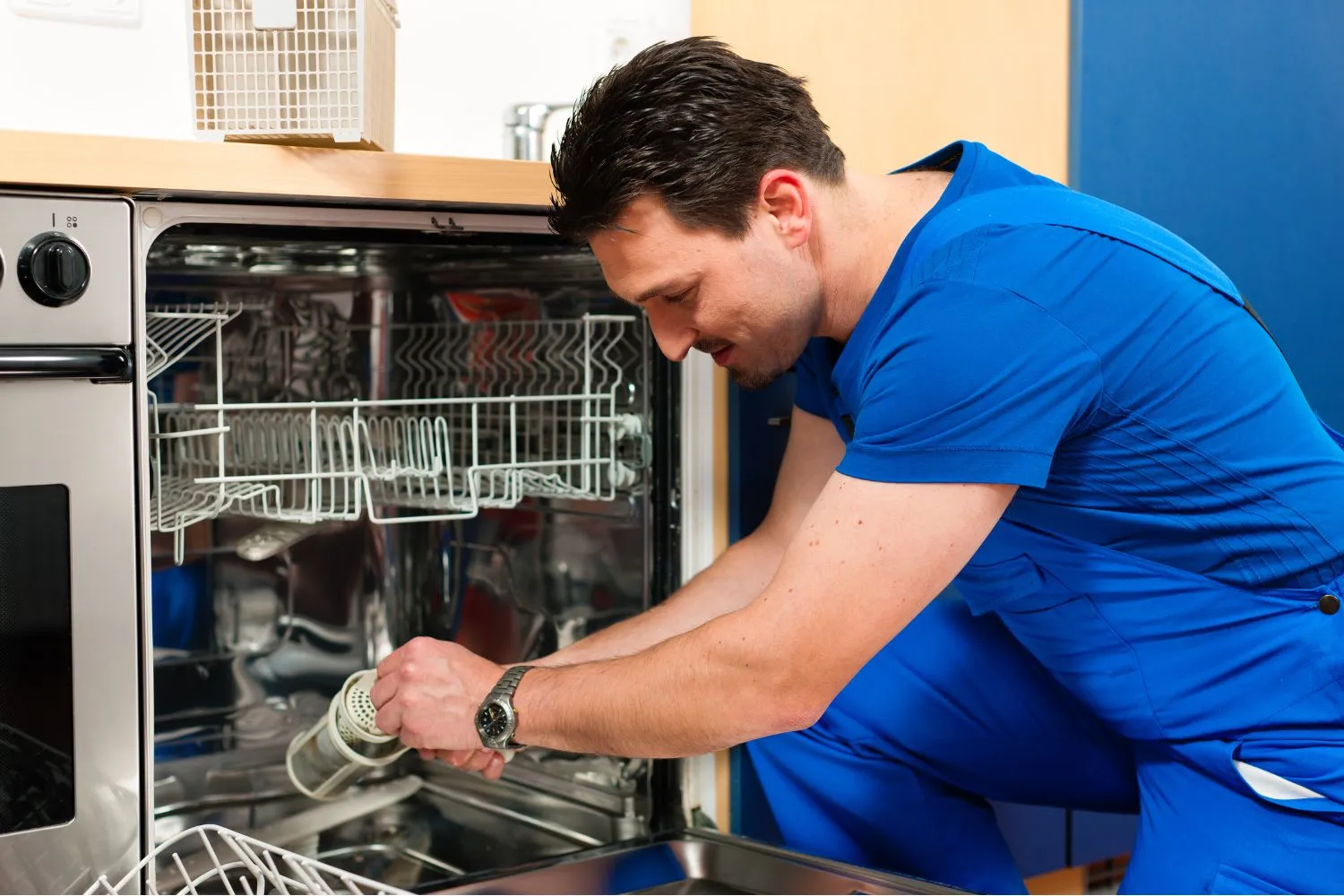
Proactive maintenance practices can enhance your dishwasher’s performance and prevent recurring issues. These strategies focus on optimizing operation and ensuring long-term efficiency.
1. Run Hot Water Before Starting the Dishwasher
Running hot water before starting a cycle ensures the dishwasher fills with heated water immediately, improving grease removal and overall cleaning.
- Turn on the kitchen sink’s hot water tap for 30–60 seconds until it runs hot.
- Start the dishwasher immediately to use the heated water.
This clears cold water from the pipes, particularly in homes where the dishwasher is far from the water heater. For energy-efficient dishwashers, this practice enhances the effectiveness of shorter cycles, reducing greasy residue on dishes.
2. Perform Regular Maintenance
Routine maintenance prevents buildup and maintains cleaning efficiency.
- Clean spray arms, filters, and door seals every one to two months, or monthly for heavy use.
- Place a cup of white vinegar on the top rack and run a hot cycle to descale the dishwasher and remove mineral deposits, odors, and grease.
- Monitor for signs of serious issues, such as persistent error codes, unusual noises (e.g., grinding or humming), or water pooling, which may indicate a failing pump or other components.
These symptoms suggest the appliance may be unreliable, requiring evaluation for repair or replacement. Avoid purchasing dishwashers from brands with poor reliability records, such as low-cost models prone to pump or valve failures; opt for reputable brands like Bosch or Whirlpool.
3. Check for Hard Water Build-up
Hard water can leave mineral deposits that reduce cleaning effectiveness, particularly in regions with high water hardness.
- Use a water softener or a dishwasher cleaner designed for hard water to prevent buildup.
- Run a cleaning cycle with a descaling agent or white vinegar monthly.
- Inspect dishes and the dishwasher interior for white, chalky residue, a sign of mineral deposits that may indicate reasons why your dishwasher is not cleaning dishes.
If deposits persist, consider installing a home water softener to improve cleaning well. This practice also prevents cloudy films on glassware, which can result from mineral residue redepositing during the cycle.
Why Choose Beach2Bay Appliances for Dishwasher Repair?

When DIY solutions fail to restore your dishwasher’s performance, Beach2Bay Appliances in Niceville, FL, offers dependable repair services for residents in Destin, Fort Walton Beach, and Freeport. Here’s why they are a trusted choice:
- Mobile, on-site service: Technicians visit your location, providing convenience for homeowners, realtors, and property managers.
- Specialized expertise can help diagnose why your dishwasher is not cleaning properly. Highly trained technicians diagnose and repair issues, from clogged spray arms to faulty filters, with precision.
- Tailored for real estate needs: Their Premier Appliance Inspection Package ensures dishwashers meet high standards, facilitating smooth property transactions.
Proven reliability: With 33 five-star Google reviews as of April 2025, Beach2Bay Appliances is recognized for prompt service, professionalism, and clear communication.
Visit the Beach2Bay Appliances website or call 850-830-8306 to schedule a service for your dishwasher problems.
FAQ's for dishwasher cleaning problems
Poor performance often results from issues like clogged spray arms, dirty filters, or low water temperature. Clean these components, ensure proper loading, and verify water heat to improve results.
Dirty dishes may result from blocked spray arms, improper loading, or a faulty detergent dispenser. Clean these parts and use the correct detergent amount.
Remove the spray arms, rinse under warm water, and use a brush to clear debris from the holes. Soak in vinegar for 15 minutes to dissolve hard water buildup.
Greasy dishes often result from low water temperature or excessive detergent. Ensure water is 120–140°F and use the recommended detergent amount to avoid residue.
Spots or residue indicate detergent residue or hard water buildup. Use a dishwasher cleaner for hard water, check detergent dosage, and run a vinegar cycle.
Food particles may remain due to clogged filters or blocked spray arms, contributing to dishwasher problems. Clean these components regularly to improve cleaning performance.
Clean spray arms and filters, check water temperature, and load dishes correctly. If issues persist, consider professional repair services.
Clean the filter every one to two months to prevent clogs. Rinse it under warm water and inspect for damage to maintain performance.
Yes, hard water buildup can clog components and leave residue. Use a water softener or run a cleaning cycle with a descaling agent to improve performance.
A faulty pump may cause poor drainage, loud noises, or persistent dirty dishes. Water pooling or cleaning issues may indicate a pump problem, often requiring professional repair.
Signs of inlet valve problems include low water levels or weak water pressure. Check for unusual noises during filling or inspect the valve for blockages.
Conclusion
A dishwasher that fails to clean effectively often results from issues like clogged spray arms, dirty filters, low water temperature, or improper loading. By cleaning key components, using the correct detergent amount, and adopting maintenance practices, such as running hot water before cycles or descaling with vinegar, you can restore your dishwasher’s performance.
Regular care, including monthly descaling for hard water buildup and filter cleaning every one to two months, ensures consistent results and prolongs the appliance’s lifespan. If troubleshooting doesn’t resolve the issue, professional expertise can make the difference. For residents in Niceville, Destin, Fort Walton Beach, or Freeport, Beach2Bay Appliances offers reliable repair services.
Schedule a service today by visiting the Beach2Bay Appliances website or calling 850-830-8306 to ensure your dishwasher delivers spotless dishes every time.
Author Profile
- John Raymond Hagler
- Beach2Bay Appliances is a trusted name in Florida for professional appliance repair services. Serving homeowners, realtors, and property managers, our experienced team focuses on reducing costly breakdowns and maximizing appliance efficiency. Committed to reliability, transparency, and customer care, we help maintain the value and functionality of homes and rental properties through routine service and urgent repairs.
Latest entries
 BlogsAugust 30, 2025Oven Smells Like Burning While Cooking? Here’s the Solution
BlogsAugust 30, 2025Oven Smells Like Burning While Cooking? Here’s the Solution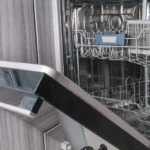 BlogsAugust 29, 2025Why Your Dishwasher Isn’t Cleaning Dishes and How to Fix It
BlogsAugust 29, 2025Why Your Dishwasher Isn’t Cleaning Dishes and How to Fix It BlogsAugust 29, 20257 Reasons Your Microwave Isn’t Working and How to Fix It Quick
BlogsAugust 29, 20257 Reasons Your Microwave Isn’t Working and How to Fix It Quick BlogsAugust 27, 2025Why Your Refrigerator Isn’t Cooling and How to Fix It
BlogsAugust 27, 2025Why Your Refrigerator Isn’t Cooling and How to Fix It
